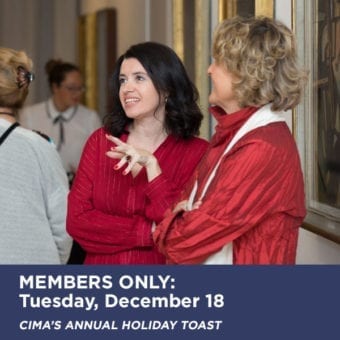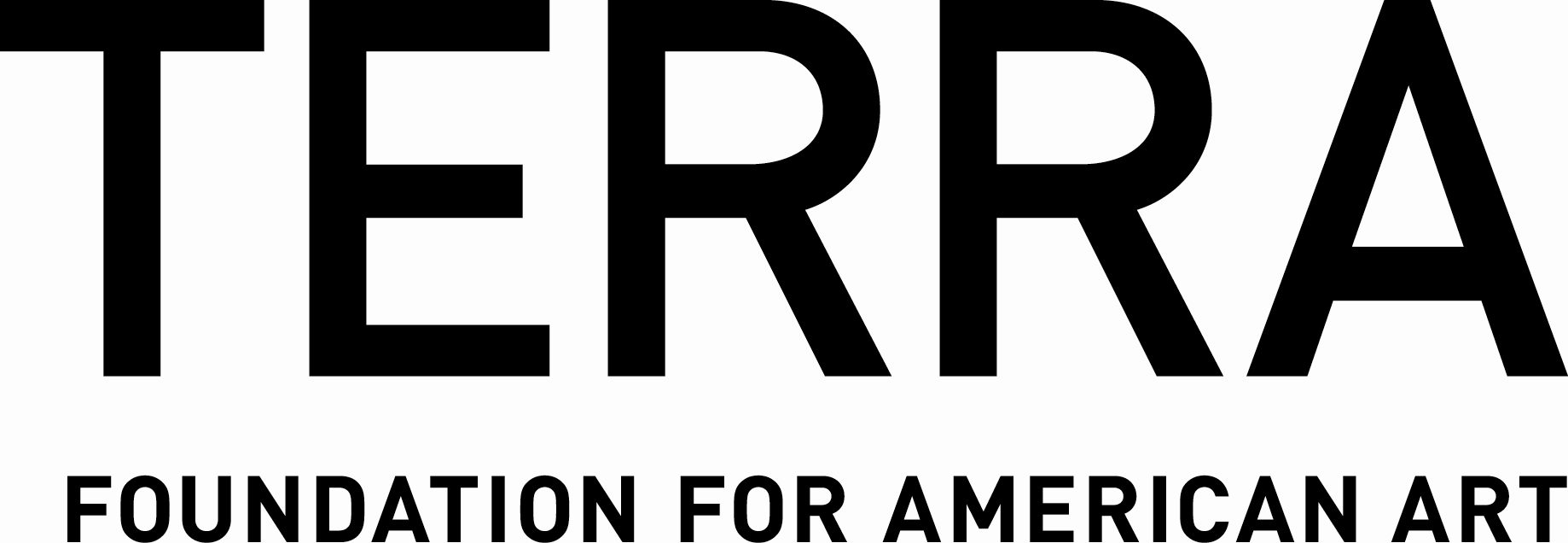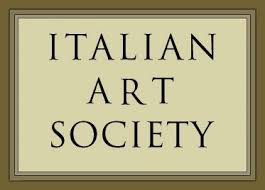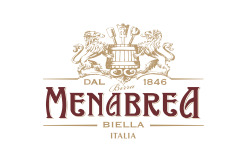MEMBERS ONLY: CURATOR-LED TOUR OF “ANDY WARHOL – FROM A TO B AND BACK AGAIN”
March 05, 2019
CIMA Members are invited to join us for a private tour of Andy Warhol – From A to B and Back Again at the Whitney Museum of American Art. The tour will be led by the curator of the exhibition Donna De Salvo (Deputy Director for International Initiatives and Senior Curator) and Neil Printz (Editor of The Andy Warhol Catalogue Raisonné).
One of the most influential American artists, Andy Warhol (1928–1987) launched his career as a commercial illustrator and gradually established his fame in the art world. Experimenting with unconventional materials and creative artistic techniques, Warhol recognized the power of images and utilized it to make a difference in contemporary art and life. The exhibition at Whitney Museum presents a retrospective on Warhol’s artworks since 1950s and introduces to the public Warhol’s life and art from a novel and modern perspective.
The exhibition will be closing on March 31, so seize the chance to experience the show before it is over!
Please note: CIMA Members will receive a private invitation link to RSVP for this event. Limited to 20 members only!
Members receive free admission to CIMA, access outside of regular public hours, a copy of the annual catalogue, and invitations to exclusive events and receptions.
PHOTO: Installation view of Andy Warhol – From A to B and Back Again (Whitney Museum of American Art, New York, November 12, 2018-March 31, 2019). Photograph by Ron Amstutz. © 2018 The Andy Warhol Foundation for the Visual Arts, Inc. / Licensed by Artists Rights Society (ARS), New York
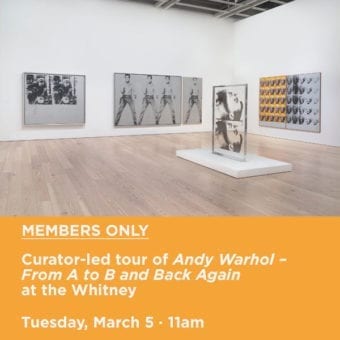
METAPHYSICAL YEARS LECTURE SERIES: ARA H. MERJIAN ON 1919
February 28, 2019
Metaphysical Years Lecture Series
Year 4: Ara H. Merjian on 1919
This lecture series offers an overview of the birth and development of pittura metafisica (metaphysical art) against the backdrop of World War I as well as in the context of the post-war years in Italy. The presentations explore significant literary trends of the time along with socio-cultural events of the short yet crucially important period covered by CIMA’s 2018-19 exhibition, Metaphysical Masterpieces 1916-1920: Morandi, Sironi, and Carrà.
Fresh off its victory as a newly minted Allied power, Italy appeared, by 1919, to have consolidated a still fitful national identity. Leaving behind the volatility of the Giolitti period, the still young country seemed poised to enter twentieth-century modernity with fresh confidence. Yet a spate of strikes and factory occupations – spurred on by revolutions in Russia and Germany – threw the political and social order into chaos, matched by an equally aggressive activism rising from the right. The violence and uncertainty of the “Red Biennium” of 1919–1921 saw a newly radicalized left square off against an emergent Fascist movement, galvanized by equal parts social agitation and virulent nationalism. Published in Milan in March, the platform of the ‘Fasci di Combattimento’ – followed by Gabriele D’Annunzio’s paramilitary occupation of the port city of Fiume later this same year – fatefully shifted the tenor of political discourse in Italy.
These new developments were significantly influenced by the example of F.T. Marinetti’s Futurist movement, which had long agitated for both war and an irredentist foreign policy. The rise – and eventual triumph – of Mussolini’s Fascist party drew extensively on Futurism’s rhetorical arsenal of virility, nationalism, and élan vitale, promising a slate wiped free of Italy’s weighty cultural patrimony. Yet the burgeoning Fascist revolution came to appeal in equal measure to a sense of order and rectitude – ideological values which echoed the “plastic values” pursued by various artists in the wake of World War One. Setting aside avant-garde fragmentation and violence, the period’s “return to order” witnessed a renewed visual investment in notions of stability, clarity, and architectural solidity, nourished upon the Mediterranean past. This lecture will examine some of these competing strains as they intersected in Italian politics and culture in 1919, as well as with a wider European moment: a moment riven by revolution and reaction, innovation and atavism, ruptures and returns.
Ara H. Merjian is Associate Professor of Italian Studies at New York University, where he is an affiliate of the Institute of Fine Arts and the Department of Art History. He was educated at Yale University and the University of California, Berkeley, where he studied under the direction of T.J. Clark. He was a Fulbright scholar to Italy, and before joining the faculty at NYU he taught at Stanford and Harvard. He is the author of Giorgio de Chirico and the Metaphysical City: Nietzsche, Paris, Modernism (Yale University Press, 2014), which won a CAA/Millard Meiss Author’s Award, and Against the Avant-Garde: Pier Paolo Pasolini, Contemporary Art and Neocapitalism, 1960-1975 (University of Chicago Press, 2019), for which he received a Creative Capital/Andy Warhol Foundation Art Writers Grant. His book Blueprints and Ruins: The Architectonic Afterlifes of Giorgio de Chirico will be published with Yale University Press in 2022, and he currently is at work on two new manuscripts: The Mimesis of the Gaze: Shared Vision and Intersubjectivity in Modernist Painting, and A Future by Design: Modernity, Totality, and the Italian Avant-Garde. He is a contributor to frieze, Art in America, and Artforum.
FREE for CIMA members and students. Registration required.
MISSED THE TALK? STREAM IT HERE
Please note: CIMA will be live-streaming the program on our Facebook page.
Program schedule:
6pm – registration, aperitivo, and viewing of Metaphysical Masterpieces
6:15pm – program begins, followed by audience Q&A
8pm – evening concludes
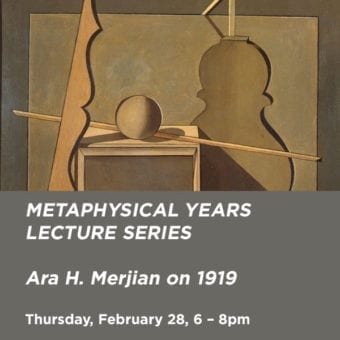
CIMA TURNS FIVE!
February 20, 2019
On Wednesday, February 20, CIMA will be celebrating its fifth birthday! In honor of the occasion, we will offer special Open Hours (from 11:00 AM to 4:00 PM) during which visitors can enjoy our current exhibition on the Metaphysical Masterpieces of Giorgio Morandi, Mario Sironi, and Carlo Carrà.
Since its inception, CIMA has successfully advanced the study and appreciation of modern and contemporary Italian art on an international scale and served as an incubator of ideas for other arts institutions. Our inaugural exhibition centering the Futurist Fortunato Depero was launched on February 21, 2014 in conjunction with a series of lectures devoted to the artist and his legacy. Manifesting as our first ever Study Day, this event inspired an exhibition on Depero organized in Madrid the following year.
Following this fruitful debut, CIMA has organized an impressive array of exhibitions, along with Study Days on topics including Fabio Mauri, Medardo Rosso, Alfred and Margaret Scolari Barr, Postwar Italian Art, Giorgio Morandi, Giorgio de Chirico and Giulio Paolini, Postmodernism in Italian Art, Léonce Rosenberg and Alberto Savinio. In an effort to carry on this tradition, we will host our next Study Day, featuring presentations on MoMA’s 1949 exhibition Twentieth-century Italian Art, on Tuesday, February 12.
Beyond offering enriching programming, CIMA consistently promotes the research of young scholars of modern and contemporary Italian art. Thanks to our collaboration with the CUNY Graduate Center and the Scuola Normale Superiore of Pisa, we have supported 28 talented research fellows to date both at CIMA’s New York location and in Italy, many of whom have gone on to pursue other prestigious fellowships or hold positions as professors and curators at a plethora of esteemed universities and museums.
Join us on February 20 as we celebrate these five years of accomplishments and the launch of our online journal Italian Modern Art, and support future programs and scholarship by making a donation!
BOOK YOUR ANNIVERSARY VISIT NOW!
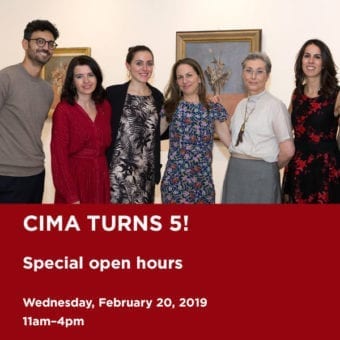
Methodologies of Exchange: MoMA’s Twentieth-century Italian Art (1949)
February 12, 2019
The conference uses the 1949 Museum of Modern Art exhibition Twentieth-century Italian Art as a case study to examine the various methodologies or approaches taken in recent years to explore the artistic exchange between the United States and Italy in the twentieth century. By examining the history of this exhibition and the traveling exhibitions that it spawned, we will explore the reception of Italian art and artists in the US, the growth of networks and collaborations between US dealers and artists, and the role that Italy played in the idea of art-making among American postwar artists. This particular subject allows for other questions as well: How did an important institution like MoMA shape the narrative of American modernism? How did Italy help Alfred Barr and MoMA rethink a Franco-centric vision of modern art after the war? How did the American art world deal with the problematic legacy of Fascist Modernism?
Organized and chaired by former CIMA fellow Raffaele Bedarida, former Terra Foundation fellow Davide Colombo, and scholar Silvia Bignami, with this program CIMA devotes a day to engendering a deeper understanding of the 1949 exhibition’s influence; namely, its role in exposing the American public, artists, and art dealers to the works of Italian modernists. Twentieth-century Italian Art acted as a catalyst for a vital exchange that had lasting effects on the American art scene. It also marked an essential turning point in the writing of the history of modern art, from both an American and an Italian viewpoint. By focusing on artists, art dealers, critics, and collectors involved in the MoMA show from both side of the Atlantic or directly affected by its consequences, the Study Day will explore a multiplicity of stories. Simultaneously it will solicit dialogue and collaboration among a wide range of methodologies that are necessary for the study of art exchange across national boundaries.
This Study Day will be held at CIMA in connection with the 107th meeting of the College Art Association and the 70th anniversary of the MoMA exhibition.
Program schedule:
10.30am
Metaphysical Masterpieces exhibition viewing and registration
11.am
Welcome by Emma Lewis, Executive Director of CIMA
Introduction by *Raffaele Bedarida
11.15 am–12.45pm
Morning Panel: Italian Projections
Laura Moure Cecchini – “Positively the only person to be interested in the show”: Romeo Toninelli collector and diplomat between Milan and New York
Adrian Duran – Neo-Cubism and Italian Painting ca. 1949: More Than Meets the Eye
Renato Camurri – A Transatlantic Intellectual Space: Italy and United States (1922–1950)
Sergio Cortesini – The Italian Novecento in America before 1949
Respondent: Emily Braun
1 – 2.30pm
lunch break
2.30 – 4.45pm
Afternoon Panel: American Responses
Will Norman – Saul Steinberg and the Unstable US Cultural Field of the Late Forties
*Davide Colombo / *Silvia Bignami – Two Americans in Italy: Alfred H. Barr, Jr. and James T. Soby at Venice Biennale and Rome Quadriennale
Sharon Hecker – A Friendly Competition: Collecting Postwar Italian Art in the Midwest
Ilaria Schiaffini – It’s Roman Holiday for Artists: The American Artists of L’Obelisco
Respondent: Melissa Dabakis
5pm
Q&A – Concluding Roundtable with All Speakers moderated by *Davide Colombo and *Raffaele Bedarida
*denotes conference organizers
MISSED THE CONFERENCE? STREAM IT HERE:
PT. 1
PT. 2
Read abstracts and bios of the speakers.
Image caption: Unidentified visitors at the exhibition, “Twentieth Century Italian Art.” June 28, 1949–September 18, 1949. Photographic Archive. The Museum of Modern Art Archives, New York. IN413.36F. Photograph by Homer Page.
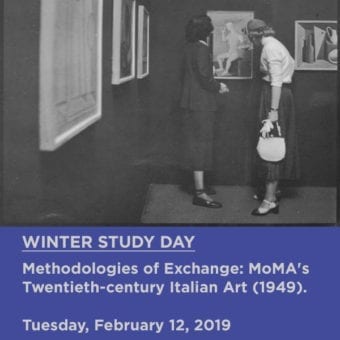
MEMBERS ONLY: TOUR OF POSING MODERNITY AT THE WALLACH ART GALLERY
February 06, 2019
CIMA Members are invited to join us for a private visit of Columbia University’s Wallach Art Gallery, where we will be led on a tour of the current exhibition entitled Posing Modernity: The Black Model from Manet and Matisse to Today. The exhibition was organized in partnership with the Musée d’Orsay, where an expanded version of the show will be opening from March 26 to July 14, 2019.
Don’t miss out on this lovely opportunity to view the exhibition before it closes on February 10! We look forward to seeing you there.
The works organized for the New York exhibition seek to examine how changing modes of representation of the black figure has been a central development within modern art. The Wallach Art Gallery’s exhibition deals primarily with questions regarding the black female figure, beginning with Edouard Manet’s portrayals of Laure, the model who posed as the maid in Olympia, in the 1860s. The exhibition also explores productions of other impressionists who worked contemporaneously alongside Manet, including Frédéric Bazille, Edgar Degas and the photographer Nadar; sculptors Charles Henri Joseph Cordier and Jean-Baptiste Carpeaux; as well as the paintings, drawings and prints of Henri Matisse. Also brought into discussion is the portraiture of renowned Harlem Renaissance artists, including William H. Johnson and Charles Alston. Finally examined is how the legacy of these pioneers of modern art has effected post-war modern and contemporary production up to the current day.
The Columbia University Wallach Art Gallery is located in the Lenfest Center for the Arts, 615 West 129th Street (enter on West 125th Street, just west of Broadway).
Please note: CIMA Members will receive a private invitation link to RSVP for this event. Limited to 20 members only!
Members receive free admission to CIMA, access outside of regular public hours, a copy of the annual catalogue, and invitations to exclusive events and receptions.

Metaphysical Years Lecture Series, Year 2: David Forgacs on 1917
February 05, 2019
Metaphysical Years Lecture Series
Year 2: David Forgacs on 1917
This lecture series offers an overview of the birth and development of pittura metafisica (metaphysical art) against the backdrop of World War I as well as in the context of the post-war years in Italy. The presentations explore significant literary trends of the time along with socio-cultural events of the short yet crucially important period covered by CIMA’s 2018-19 exhibition, Metaphysical Masterpieces 1916-1920: Morandi, Sironi, and Carrà.
1917 was a critical year in Italy’s history. Two years after intervention in the First World War, the continuing carnage at the front, including summary executions of Italian soldiers accused of acts of cowardice ordered by their commanding officers, had severely eroded morale among the troops. At the same time, opposition to the war was on the rise among civilians. In August Pope Benedict XV described the war as a “pointless massacre” (inutile strage). Later that month antiwar protests in Turin, the city with Italy’s most militant working class, were put down by armed force. In October the Italian army virtually disbanded after a defeat at Caporetto. In November, Russia’s Bolshevik revolution radicalized a part of the Italian left and terrified the Italian bourgeoisie. This lecture will reconstruct something of the subjective experience of that remarkable year through quotations from soldiers’ and civilians’ letters and memoirs, trench newspapers, and contemporary political writings, including Antonio Gramsci’s celebration of the revolution in Russia. It will consider whether 1917 should be seen as the real start of the civil war that would escalate into near revolution in 1919-20 and provoke the violent reaction of the fascist squads. It will look, lastly, at some of the literary, cinematic, and artistic production of that year and consider why Italy, despite widespread antiwar feeling, was the only one of the belligerent nations that did not produce any significant antiwar art before the armistice.
David Forgacs holds the endowed Guido and Mariuccia Zerilli-Marimò Chair of Contemporary Italian Studies at New York University, where he is also Chair of the Department of Italian Studies. He was educated at Oxford, Pavia, and the Scuola Normale Superiore, Pisa. Before coming to NYU he taught at the universities of Sussex, Cambridge (Fellow of Gonville and Caius College), Royal Holloway University of London (Reader in Film Studies), and University College London (holder of Panizzi Chair of Italian, established in 1828). He has also held Visiting Professorships at the University of Rome La Sapienza and LUISS, Rome. In 2006-9 he was Research Professor in Modern Studies at the British School at Rome. In 2005 he was awarded the Ordine della Stella Italiana, Grande Ufficiale della Repubblica Italiana, for services to the promotion of Italian culture abroad. His most recent book is Italy’s Margins: Social Exclusion and Nation Formation since 1861(Cambridge University Press, 2014; Italian edition Margini d’Italia. L’esclusione sociale dall’Unità a oggi, Laterza, 2015). His next book, Messaggi di sangue. Violenza, stato e comunicazione in Italia dal Risorgimento a oggi, will be published by Laterza in 2019.
FREE for CIMA members and students. Registration required.
WATCH THE FULL LECTURE HERE
Please note: CIMA will be live-streaming the program on our Facebook page.
Program schedule:
6pm – registration, aperitivo, and viewing of Metaphysical Masterpieces
6:15pm – program begins, followed by audience Q&A
8pm – Evening concludes
Refreshments have been generously donated by:
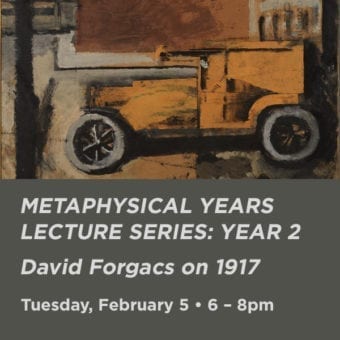
METAPHYSICAL MASTERPIECES EXHIBITION CATALOGUE LAUNCH
January 29, 2019
We are thrilled to be hosting our first event in partnership with Rizzoli Bookstore NYC!
All are welcome to join us for an evening dedicated to the presentation of our 2018–19 exhibition catalogue for Metaphysical Masterpieces, 1916–1920: Morandi, Sironi, and Carrà. The evening will begin with a conversation between artist, writer, and co-editor of Hyperallergic Weekend, Thomas Micchelli, and CIMA fellow, Erica Bernardi, followed by a reception.
This event is free and open to the public! No registration required.
Erica Bernardi received her Ph.D. from the University Ca’ Foscari in Venice. Her research focuses on Franco Russoli, the art historian, museologist, and director of the Pinacoteca di Brera in Milan; most recently she published the book Senza utopia non si fa la realtà. Scritti sul museo 1952–1977, based on her PhD dissertation. She is currently the curator of the Franco Russoli archive and collection, as well as collaborating with the Brera on historical research projects, and coordinating a work team regarding contemporary museology for ICOM – Italy.
After a specialization thesis on Gaudenzio Ferrari and the North Italian Renaissance, she ended up studying the criticism of the twentieth century—catalyzed by her work with Russoli’s archive. Her first project was the catalogue of La Raccolta Berenson (1962); during an internship at Villa I Tatti, Harvard University, she developed what became La nascita del Fogg museum nella corrispondenza Forbes-Berenson (1915–1928). She also catalogued and put online historical photographs from Berenson’s family archive.
During the fellowship Erica will examine the figure of Lamberto Vitali, as a critic and art collector, in relation to those artists he especially appreciated and which are featured in CIMA 2018–19 Metaphisical Masterpiecesexhibition: Morandi, Carrà and Sironi.
Thomas Micchelli is an artist, writer, and co-editor of the online critical review Hyperallergic Weekend. His paintings and drawings have been exhibited at such New York venues as Centotto; Studio 10; Life on Mars; Outlet; Norte Maar; Schema Projects; and Leslie Heller Workspace; and at John Davis Gallery in Hudson, New York. He has served as a visiting artist and critic at Hunter College; Pratt Institute; Maryland Institute College of Art; AICAD New York; RU Residency; and elsewhere.
In addition to Hyperallergic, his writing has appeared in The Brooklyn Rail, NY Arts, and Art21, and in exhibition catalogues for Kunsthall Stavanger, Stavanger, Norway; ARoS Aarhus Art Museum, Aarhus, Denmark; and AB-ANBAR, Tehran, Iran; as well as the New York galleries Cheim & Read; Betty Cuningham; Life on Mars; and Derek Eller.
Most recently, he has contributed essays to Maria Bussman: Allerdings (Passagen Verlag, 2018); Judith Bernstein: Cabinet of Horrors (The Drawing Center, 2017); Richard Jochum: Endless Bodies of Work (Kiesler Foundation, 2017); Brenda Goodman: In a New Space (David & Schweitzer Contemporary, 2017); Cordy Ryman: Free Fall (Tower 49 Gallery, 2016), and to a forthcoming monograph on Alice Trumbull Mason (Rizzoli, Fall 2019).
In partnership with:
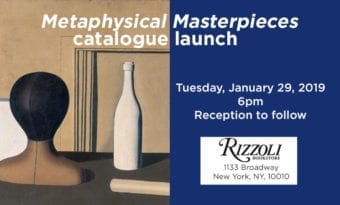
MEMBERS ONLY: TOUR OF CELEBRATING TINTORETTO AT THE MET WITH CURATOR ANDREA BAYER
January 23, 2019
CIMA Members are invited to join us for a private afternoon visit of the Metropolitan Museum of Art’s exhibition, Celebrating Tintoretto: Portrait Paintings and Studio Drawings. The tour will be led by the curator of the exhibition, Andrea Bayer (Deputy Director for Collections and Administration at the MET).
Jacopo Tintoretto is one of the most celebrated sixteenth century Venetian painters, acclaimed for his large-scale narrative scenes and his intuitive portraits. In celebration of the five hundredth anniversary of his birth, the MET’s exhibition explores a little-studied aspect of Tintoretto’s portraiture–its shockingly modern immediacy.
The exhibition shows portrait studies from American and European museums and private collections, brought together for the first time, drawing them into a larger discussion of the artist’s portraiture and approach to painting, as well as the artistic practice within the artist’s workshop.
The exhibition will be closing January 27th, so this is a wonderful opportunity to experience the show before it’s over!
Please note: CIMA Members will receive a private invitation link to RSVP for this event. Limited to 20 members only!
Members receive free admission to CIMA, access outside of regular public hours, a copy of the annual catalogue, and invitations to exclusive events and receptions.
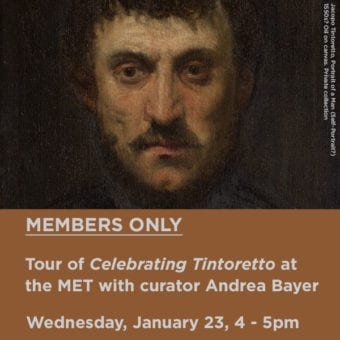
Metaphysical Years Lecture Series, Year 3: Selena Daly on 1918
January 22, 2019
Metaphysical Years Lecture Series
Year 3: Selena Daly on 1918
CIMA presents a landmark five-part lecture series held in conjunction with the 2018–19 exhibition Metaphysical Masterpieces 1916-1920: Morandi, Sironi, and Carrà. Join leading scholars as they illuminate, year-by-year, the cultural and socio-political contexts in which Metaphysical painting was born and developed, broadening our understanding of this provocative yet short-lived style.
At the beginning of 1918, Italy was still reeling from the Army’s devastating defeat at Caporetto just a few months previously, which had forced a retreat of 150 kilometers and had created 400,000 refugees fleeing from Austrian occupation. One of the Army’s responses was to establish a Propaganda Service which, among other initiatives, produced humorous ‘giornali di trincea’ (trench newspapers) for soldiers to help raise morale. The pages of these newspapers featured the illustrations of many of Italy’s most important artistic figures, including Mario Sironi, Carlo Carrà, Giorgio De Chirico, Ardengo Soffici and Massimo Bontempelli, working in styles that starkly contrasted with the metaphysical painting that some of them were producing simultaneously.
With so many of its members, including the Futurist leader Filippo Tommaso Marinetti, engaged in military activity at the front, the Italian avant-garde was facing a moment of crisis in 1918. In February, Marinetti took the radical step of publishing the ‘Manifesto of the Futurist Political Party’, which formally divided the movement into artistic and political strands, although the party itself would not be established until after the war’s end. Through the party newspaper, Roma futurista, launched in September, soldiers and officers who were not artistically inclined were brought into the Futurist fold.
The final Italian offensive at Vittorio Veneto in October brought about the surrender of the Austro-Hungarian forces and fighting concluded on November 4th, a full week before the cessation of hostilities on the Western Front.
The Futurist movement in November 1918 was radically different from that which had existed at the start of the European conflict in August 1914. Some key members such as Umberto Boccioni had died and others, such as Carrà, were pursuing new metaphysical directions. Futurism stood as a nascent political party – a move intimated by Marinetti since 1913 but never launched. In March 1919, the Futurist Political Party would join forces with Benito Mussolini’s Fasci di Combattimento, laying the foundations for a new era of Italian society and culture.
Selena Daly is a Lecturer (~Assistant Professor) in Modern European History at Royal Holloway, University of London. She previously worked as a Lecturer in Italian Studies at University College Dublin and was a Fulbright Scholar at the University of California, Santa Barbara in 2014-15. Her research interests focus primarily on Italy during the Great War. Her monograph, Italian Futurism and the First World War, was published by University of Toronto Press in 2016 and was one of five non-fiction titles shortlisted for The Bridge Book Award in 2017. She is a member of the Executive Committees of the Society for Italian Studies and the Association for the Study of Modern Italy and is an Associate Editor of the journal, First World War Studies.
Free for students and CIMA members.
MISSED THE LECTURE? WATCH HERE
Program schedule:
6pm – registration, aperitivo, and viewing of Metaphysical Masterpieces
6:10pm – program begins, followed by audience Q&A
7:30pm – Evening concludes
Refreshments have been generously donated by:
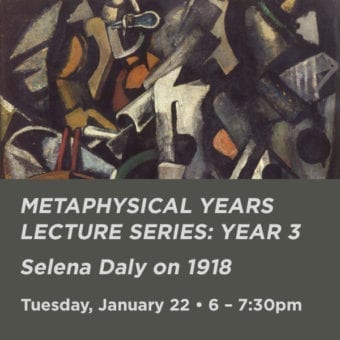
Members Holiday Toast
December 18, 2018
CIMA Members are invited to enjoy the Metaphysical Masterpieces exhibition and toast to the holidays with prosecco and panettone! Each member is welcome to bring a friend.
* RSVP is required. Members will receive a private invitation link.
For further inquiries please contact info@italianmodernart.org
*Panettone is generously provided by Di Palo’s Fine Foods (200 Grand St.)
